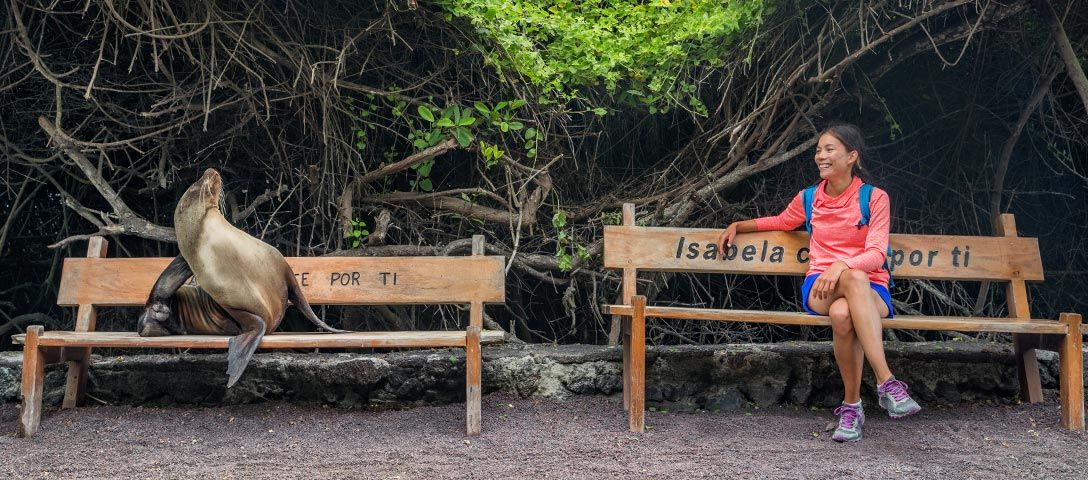No other spot on earth displays a fiercer, friendlier, and more abundant wildlife than the Galapagos Islands. And no other location attracts tourists from around the world to discover such unique and assorted vegetable and animal life. The remote nearby islands of Ecuador had proved years ago that these are extremely significant, not only for the global flora and fauna but also for building the world-famous theory of evolution.
It is to be noted that every single island Charles Darwin visited had served as an inspiration for his notorious work “On the Origin of Species.” The isolation of the islands allowed various species to evolve without fear, to obtain specific physical and behavioral characteristics, and to co-evolve with others on a small territory 1,000 km from the mainland out into the Pacific.
What’s more, Galapagos wildlife that was shaped throughout millions of years of land creation has demonstrated a high-level adaption to some of the harshest environments on earth - continuous volcano eruptions, lava flows, and excessive temperatures that predominated during that period.
To show you better the Galapagos Islands’ significance, Airflyby Team is going to disclose the best time to go to Galapagos, some of the Galapagos’ must-sees, as well as ways to explore the natural sanctuary.
When to Visit Galapagos Islands
Depending on what do you expect from your Galapagos trip, what you want to see, and which type of travel do you want to have, you might have to consider several factors. For instance, there are two seasons on the islands.
One is dry and cool (between June and November), and the other one is warm and wet (between December and June). And that doesn’t mean you have to pick the season to your liking for comfort and convenience, but because several animal species are found during a specific season, or even for a brief period within a season.
For a better understanding, Galapagos in December is flourishing in flora thanks to the favorable climate. The vegetation comes into bloom due to the increasing frequency of rains and the landscape is shifting from dry and robust to fresh and lush green.
Galapagos birds, reptiles, and animals see changes as well, as most of them are mating, hatching, and fledgling. Perhaps, this is a wonderful time to visit the Galapagos Islands and witness the miracle of the nature being born and developed.
Take a look at the table below to see the temperatures and rain levels around the year on Galapagos, and plan a trip to these distant lands accordingly:
The Galapagos Islands Weather Chart
The warms of the start of the year, as well as the crescent abundance of rains, make the perfect environment for diverse species to occupy a vast territory on the firm ground. Therefore, it serves as an excellent timing to be around and admire the Galapagos wildlife.
To get a glimpse of sea lions, turtles, and tortoises, as well as a variety of land birds, visit the Galapagos Islands starting from February to April. Reserve a Galapagos trip to May, as land and sea temperatures are at the highest thus, it is a reasonable time for both land and sea explorations.
Also, during May, blue-footed boobies (the characteristic for these lands marine birds) are performing their dances. It is to be noted that half of the global population of blue-footed boobies are hatching on Galapagos. If you don’t want to miss the intricate and charming courtship dance of these unique species, then May might be your choice.
The cool and dry season shouldn’t be underestimated as, during it, the ocean currents are sending to Galapagos’ coasts plenty of plankton and nutrients. These, therefore, serve as a perfect dish for albatrosses and penguins. The braver divers are still provided with an opportunity to dive and explore the depths of the ocean.
You may want to build a Galapagos trip according to your budget, but keep in mind, wherever you may be in the world, traveling to this wildlife enriched spot might cost you an arm and a leg. However, there is such a meaning as the cheapest time to visit Galapagos, and based on the experience of multiple travelers, the best tip for making a trip to the ecological wonder is to book flight tickets in advance.
For instance, a round-trip, economy class ticket booked through Hop2.com for May 2020 might cost you around $700 from the US to the San Cristobal Airport (SCY) on San Cristobal Island. Thinking about the fact that the average price for a round-trip from the mainland of Ecuador is somewhat $400, a $700 flight from the US is not extremely pricey. To get the best flights, no matter what spot you are departing and to what region on the planet, read our blog post “20 Tips on How to Find Flights That Are Amazingly Cheap.”
Booking accommodations in advance is a wise way to save money as well. Since tourism has been growing fast for the Galapagos Islands in recent years, hotel prices are increasing fast towards the day of your arrival. Thus, since you have been arriving on San Cristobal Island, you may want to rent a hotel room right away when you are done booking tickets.
How to Explore Galapagos Islands
Speaking of San Cristobal Island, it is the second-largest tourist spot on Galapagos, that’s why you may easily find hotels and other accommodations to your taste. But this is not the last way to explore the archipelago. Galapagos cruises, as well as Galapagos boat tours, are taking place frequently to the delight of tourists.

So, you have two options here: to stay on one of the three inhabited islands and make boat rides to other ones, or spend your entire time on a cruise that will take you to all of the islands in the archipelago. As usual, your decision might be based on several factors.
- Cost - The downside of taking a Galapagos cruise is that it is quite expensive. Also, those suffering from seasickness might want to avoid spending the entire vacation on an ocean-drifting boat.
- Time - Exploring the nearby islands of Galapagos might be difficult if you are choosing to stay on the firm ground. You will have to spend a good part of your time to get from your place of accommodation to the boat, and back to your property. What’s for the cruises, most of the trips between the islands are made throughout the night. Thus, you may have more time for exploration.
- Accessibility - Just like the previous factor, accessibility is limited for land-based vacation, as only five islands can be explored separately during one day. And no night trips can be made on the boat as they are dangerous. On the other hand, being on a cruise through Galapagos, you can explore more islands that are included in your package.
According to the above-stated factors, as well as your needs and preferences, you can make up your mind on how to explore Galapagos. Land-based tours with boat rides to the nearby islands and cruises across the archipelago offer extremely different experiences.
Hence, it is up to you, whether to drift the friendly waters on a boat that might take from 20 up to 100 people on a week-long ride or discover the ecological wonder of several islands by making land day tours, taking short boat rides, and keeping your feet sturdy on the ground.
Must-Do in Galapagos
Depending on where you are going to stay, and what islands you are going to visit on Galapagos, there are plenty of things to do around the isolated islands and a myriad of attractions to admire. For instance, perhaps the first stop you would want to make is at the Charles Darwin Research Station on Santa Cruz Island, since Charles Darwin was the first one to properly introduce this remote location to the world.
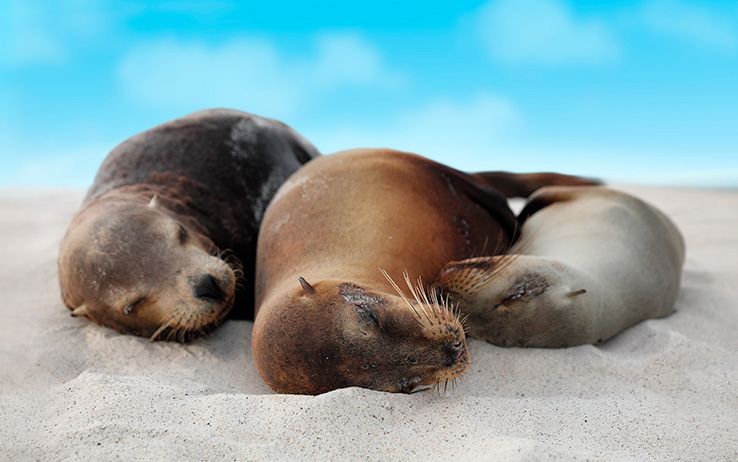
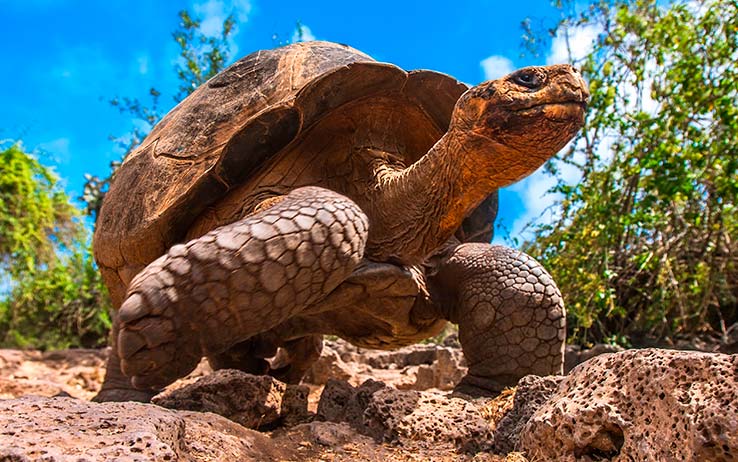
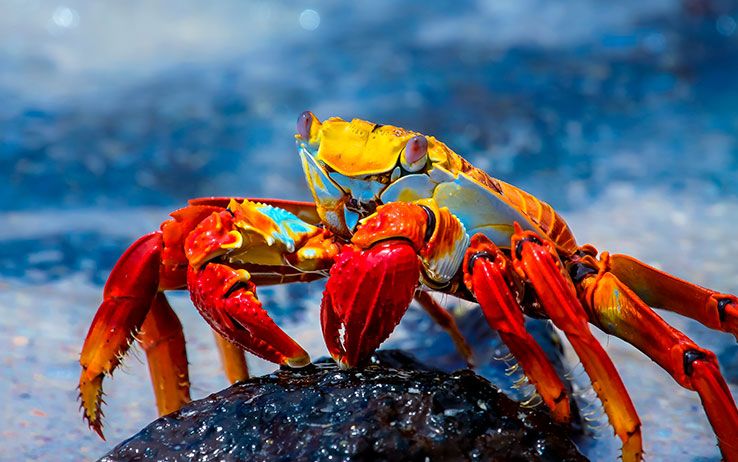


There you’ll be able to familiarize yourself with the breeding for research and reintroductions of such fauna representatives as giant tortoises and land iguanas, as well as a wide range of endemic plants. The research center is set to give you a view of what you are going to experience on the Galapagos Islands.
Some of the best islands to visit in Galapagos, according to the inhabitants, are Floreana and Isabela Islands. Floreana Island provides tourists with favorable opportunity to snorkel and simultaneously explore the habitat of sea lions, rays, penguins and reef fish. The perfect site for this activity is the so-called “Devil's Crown” - an underwater volcanic cone that is also home to colorful corals that are found there.
This particular island is one of the first to be inhabited, thus, it has an extensive history, with baronesses, pirates, murders, and other stories that shaped the history of the archipelago. Talking to the inhabitants of the Floreana is a great chance to get a glimpse at the island’s past and understand how it has evolved.
Additionally, the Post Office Bay offers a great opportunity to send postcards home without a stamp via the over 200-year-old post barrel and other travelers.
What’s for Isabela Island, the first-largest island in the Galapagos, due to its high volcanic activity (six volcanoes are active to the present day), is the perfect place to hike on lava fields, explore the lush mangroves, and witness such fauna representatives as flamingos, crabs, marine iguanas, penguins, and flightless cormorants.
Snorkeling with angelfish, manta rays, sea turtles, and harmless sharks in an unconventional environment is an absolutely surreal experience in Los Tuneles on Isabela Island.

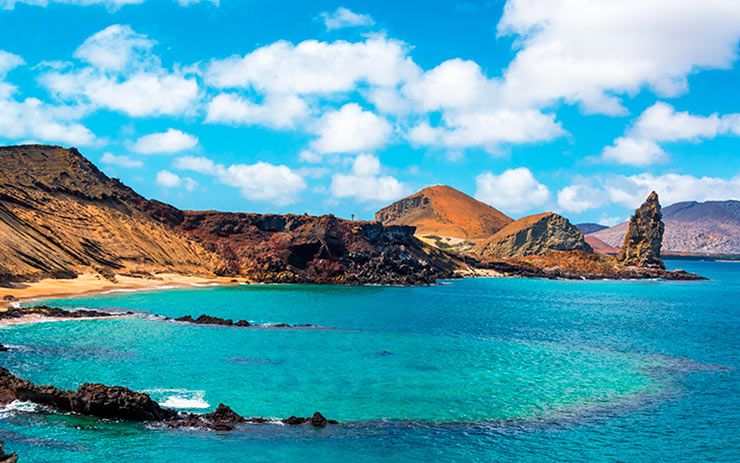
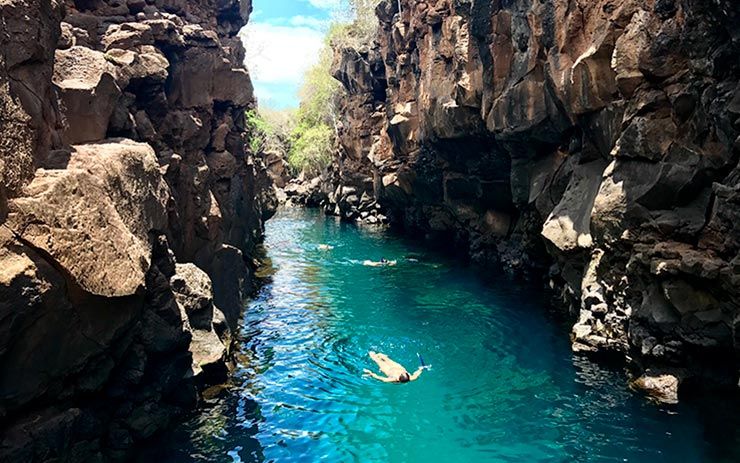
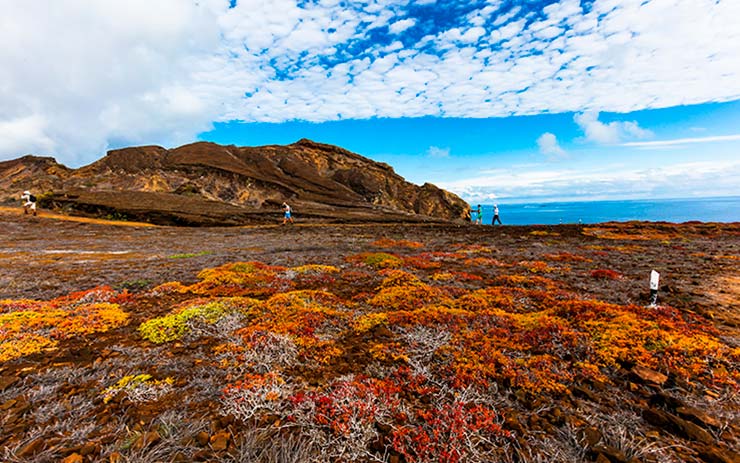

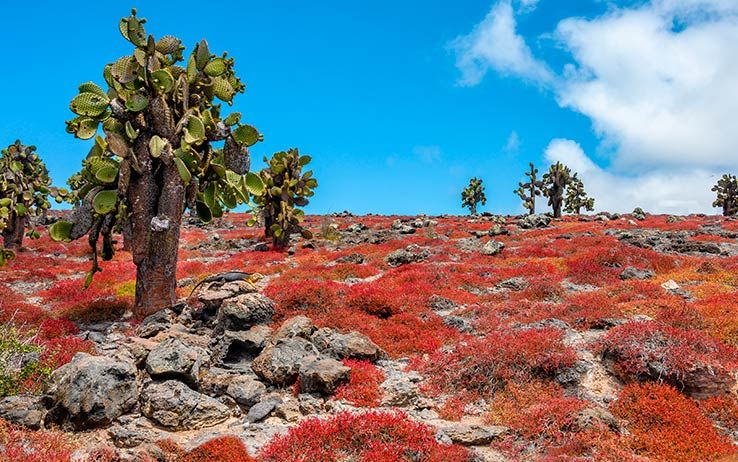

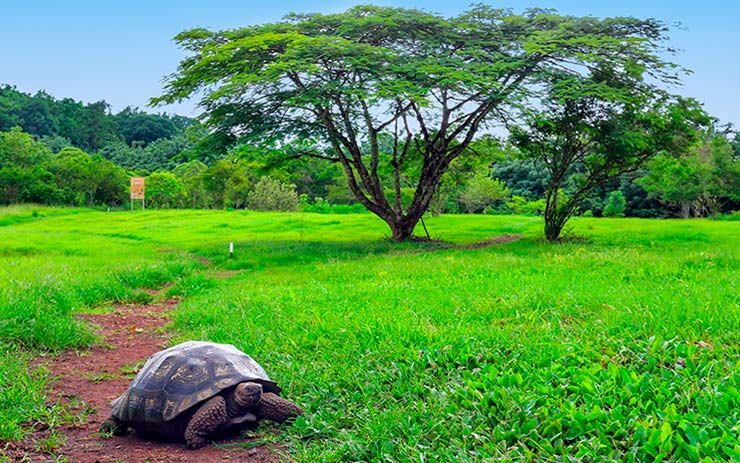
- El Muro de las Lágrimas (The Wall of Tears), that was built by Ecuadorian prisoners who were sent to Isabela and forced to build it to keep them from becoming mad of isolation and boredom.
- Flamingo Lagoon - found on the south of the island, it serves as a wonderful spot to admire these beautiful creatures.
- Tintoreras Islets - the perfect habitat for marine iguanas, thanks to the lack of non-native predators, and a beautiful location to snorkel in lava tunnels, as well as to hike through the spectacular landscapes.
- Sierra Negra - the second largest caldera on earth that must be visited for volcano lovers as well as regular tourists who enjoy hiking on unusual ambiance.
- Española Island - one of the smallest, but also one of the oldest islands of the archipelago (created about 4 million years ago), is extremely visited by tourists for the abundance of the endemic fauna. Waved albatrosses, red and turquoise marine iguanas, blue-footed boobies, swallow-tailed gulls, and specific only to this island Española Mockingbird and Española lava lizard can be found on this remote island.
- Bartolomé Island & Pinnacle Rock - one of the most notorious locations on the Galapagos thanks to the habitat for Galapagos penguins and the wonderful scenery the Pinnacle Rock gives.
As you can see, the Galapagos Islands can appease anyone's tastes, whether craving for active leisure, moderate activities, or just a relaxing vacation. So, you can take a family trip to Galapagos, and make your kids explore the endemic flora and fauna, or have a grouped journey with your friends enthusiastic about hiking and snorkeling.
Galapagos Packing List
Hopefully, we have intrigued you to see the Galapagos Islands with your own eyes. But before you proceed flying to discover the location, you might want to know what to bring with you. So, here is a Galapagos packing list:
- Heavy-duty shoes for hikes across lava fields and lands full of volcanic rocks, dust, and firm ground.
- A pair of flip-flops or sandals to use on boats and in town.
- Sunscreen with a high level of SPF - a must for anyone who doesn’t want to get burnt. Consider purchasing a reef-safe sunscreen to avoid impacting badly the coral reefs when swimming.
- A hat to protect from the blazing sun.
- A rash guard - if traveling during the warm season.
- Snorkeling gear - if you are able to carry them with yourself.
- Reusable water bottle - to reduce plastic waste.
- Rain gear, both for yourself and your camera. Though you might travel during the dry season, rains may occur at any time on the Galapagos Islands.
- Cash. ATMs are located on Santa Cruz and San Cristobal, but they frequently run low on cash. So, you might want to have some cash at hand for tips, but you can also use credit cards for the rest. The official currency is the US dollar.
Now that we shared some good you may admire and experience on the Galapagos Islands, it’s time to decide whether you want or not to visit this remote but absolutely wondrous location. If you make up your mind to visit the Galapagos Islands, purchase a ticket with Hop2.com to save on your travel and book it in one of the most pleasant ways. Airflyby Team wishes you happy journeys, wherever you may want to go!
Last Updated on January 11, 2020.
